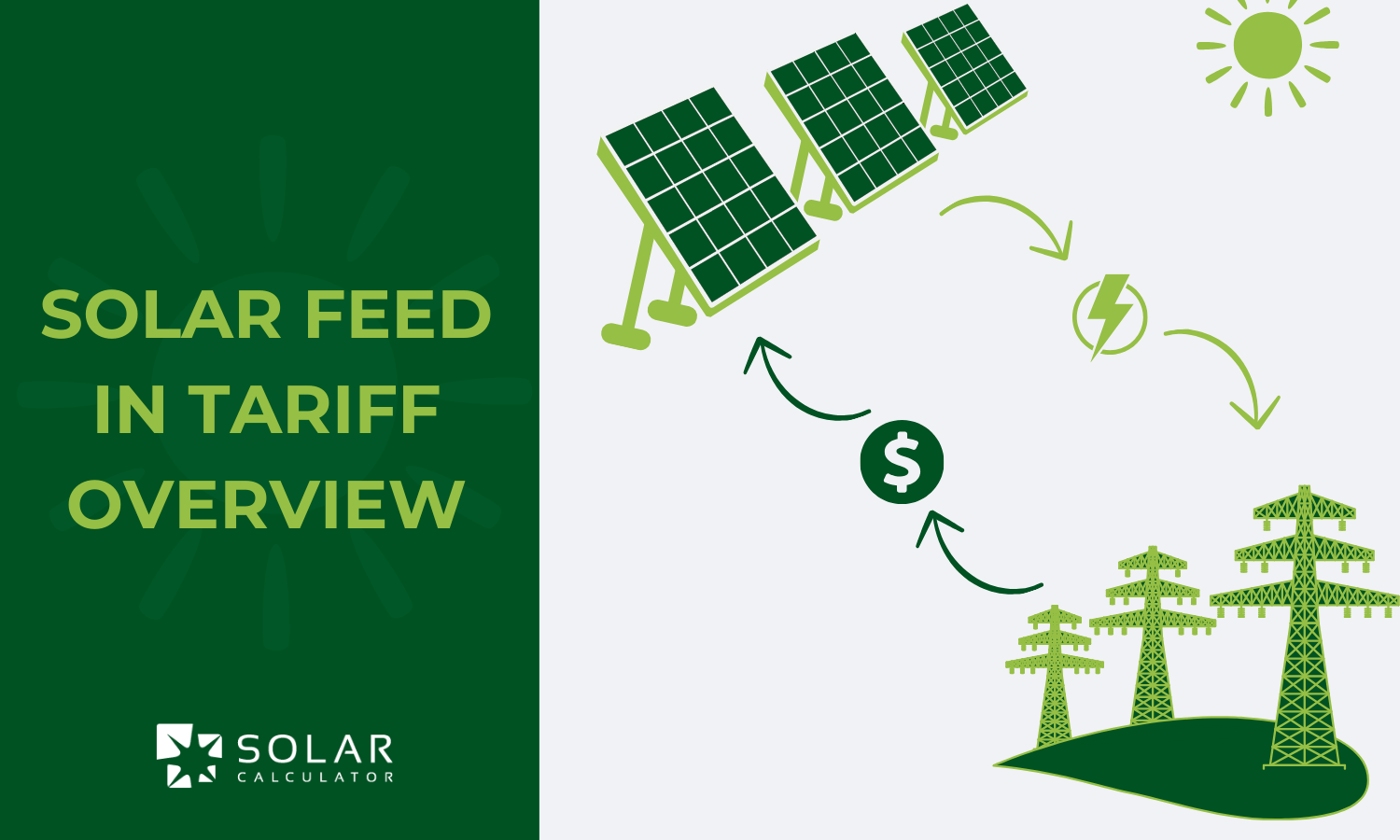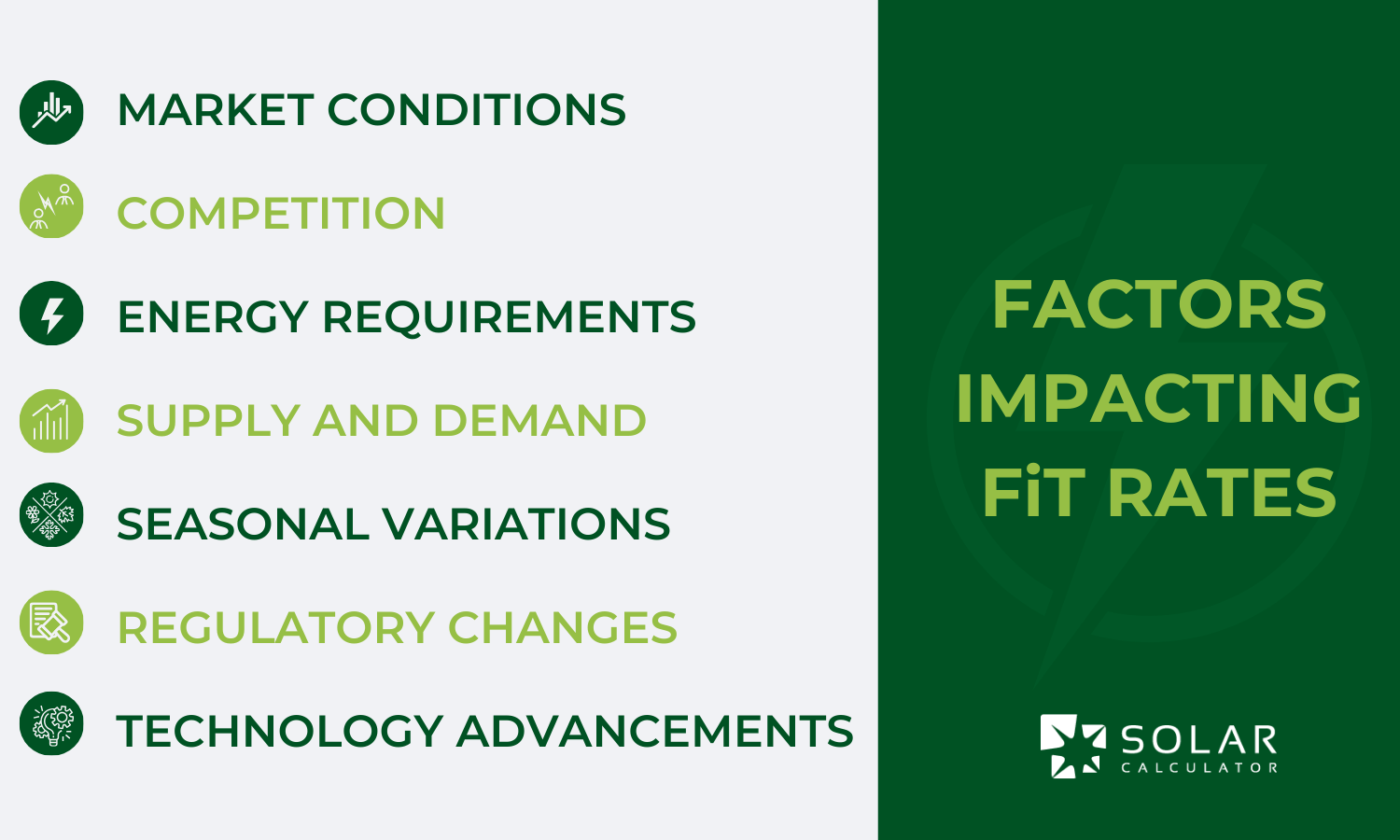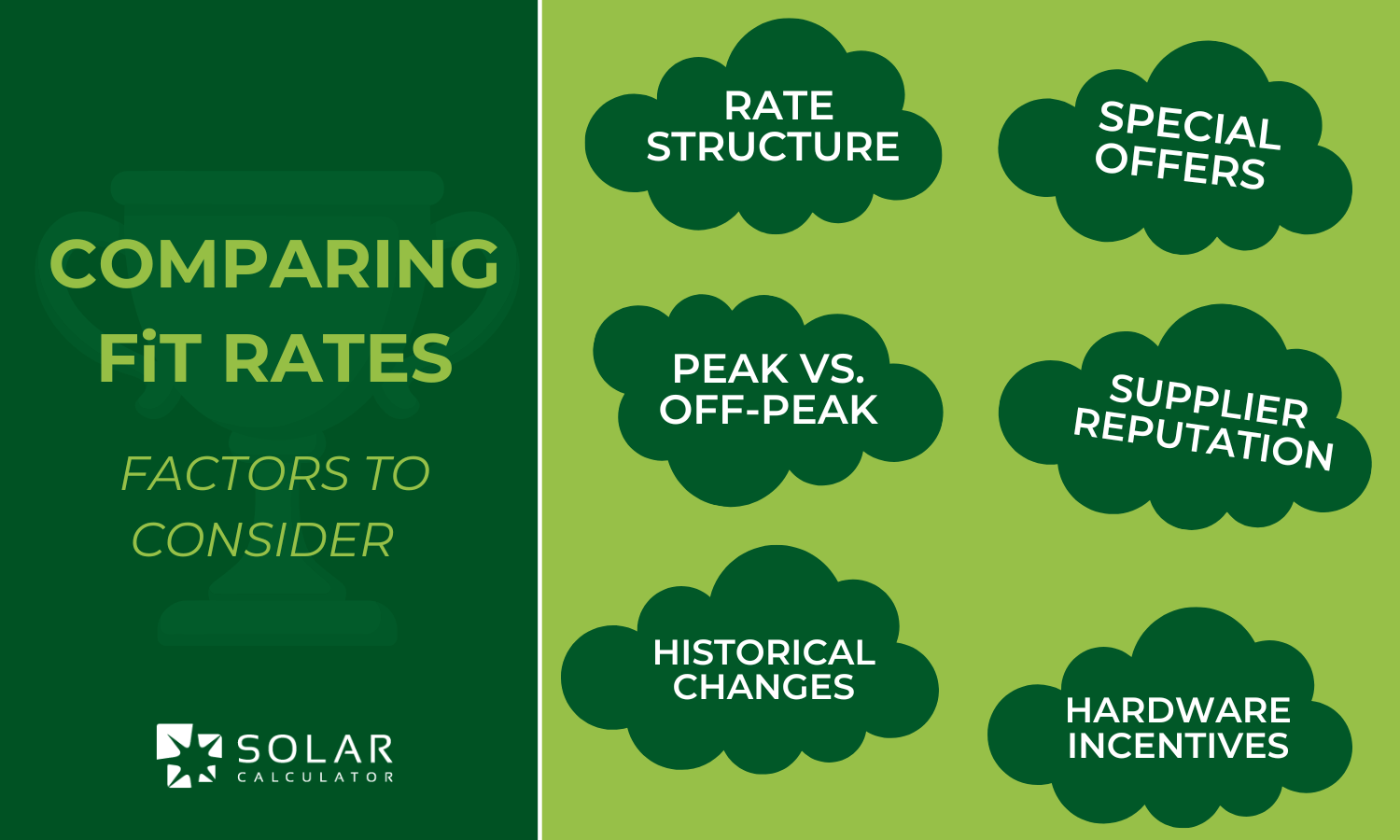Best Solar Feed in Tariffs NSW 2024
New South Wales offers some of the most favourable solar feed in tariffs in Australia.
Reading time: 4 minutes
With almost one in three homes now equipped with solar systems, properties with solar not only benefit from reduced energy bills, but also the option to sell excess power back to the electricity companies in the form of a solar feed-in tariff (FiT).
With more than a dozen different energy providers offering feed-in tariffs rebates, our up-to-date list of the best solar feed-in tariffs in NSW for 2024 can help you to maximise savings and secure the best solar feed-in tariff.

What is the solar feed in tariff?
The solar feed-in tariff (FiT) is a credit offered to solar panel owners by electricity retailers for unused electricity that is sent back to the grid.
Sometimes referred to as solar credits or the solar buy-back scheme, solar owners can send leftover electricity back to the grid to receive a credit on their electricity bill at a predetermined cents per kWh rate.
Solar feed in tariff rates in Australia can vary dramatically between state and territories according to rates set by electricity retailers. Individual solar rebate rates may differ for businesses and individuals that are eligible for a government scheme feed-in tariff.
Is there a minimum feed-in tariff in NSW?
No, there is no minimum solar feed-in tariff in New South Wales.
Victoria is currently the only State or Territory in Australia where the government requires energy retailers to provide either a flat minimum FiT 4.9 cents per kilowatt-hour (c/kWh) or a time-varying FiT ranging from 3.9 to 11.3 c/kWh.
There is no legislation in New South Wales that governs minimum FiT rates.
With no mandated minimum FiT in place for New South Wales, the rates are set by individual energy retailers. These rates can vary significantly and, in a number of cases, incentivise hardware purchases through the energy retailer with a higher FiT.
Buy with confidence
How is the NSW solar feed in tariff calculated?
In New South Wales, solar feed in tariffs rates are determined by energy retailers.
Unlike in Victoria where the government sets a minimum FiT each year, energy companies in New South Wales have the freedom to update rates based on market conditions, competition, and energy requirements.
The discrepancy between energy rates and solar feed-in tariffs highlights the importance of self-consumption, as well as a move towards solar storage to maximise the economic benefits provided by a solar system.
At the time of writing, the average energy rate costs in NSW are approximately 30 cents per kilowatt-hour (c/kWh). In comparison, the average solar feed-in tariffs (FiTs) offered by the same energy providers ranges from approximately 5c/kWh to 15c/kWh.
Who currently offers the best solar feed-in tariff in NSW?
As of June 2024, Origin Energy offers the highest Max Solar Fit 20c/kWh on solar systems purchased through Origin under 7kW. While Indigo Power currently offers the highest Min Solar FiT at 12c/kWh.
When it comes to finding the best solar Solar Feed-in Tariff in New South Wales, solar owners have a range of electricity retailers to choose from. The electricity retailers in New South Wales with the highest Feed-in Tariffs are as follows:
1. Origin Energy
Min Solar FiT:
7c/kWh
Max Solar FiT:
20c/kWh
Notable Conditions:
Origin Energy offers a maximum solar feed-in tariff (FiT) of 20c/kWh for customers with an Origin Energy solar system up to 7 kW. For systems over 7 kW, the FiT rate is 7c/kWh.
2. AGL
Min Solar FiT:
7c/kWh
Max Solar FiT:
15c/kWh
Notable Conditions:
To be eligible for AGL’s solar feed-in-tariff in New South Wales, the inverter capacity of the solar system must not exceed or must be limited to 10kW.
3. Engie (formerly – Simply Energy)
Min Solar FiT:
5.5c/kWh
Max Solar FiT:
12c/kWh
Notable Conditions:
Solar feed-in tariffs offered by Engie (formerly – Simply Energy) may vary depending on your energy plan. Customers can confirm FiT entitlements by referring to the product card that they have selected.
4. Red Energy
Min Solar FiT:
6c/kWh
Max Solar FiT:
12c/kWh
Notable Conditions:
Max solar FiT rates offered by Red Energy are limited to the first 5kWh per day. Customers must also be signed up to an eligible residential or business plan and solar systems must be net metered.
5. Energy Australia
Min Solar FiT:
7.6c/kWh
Max Solar FiT:
7.6c/kWh
Notable Conditions:
In NSW, Energy Australia offers a flat rate of 7.6c/kWh for excess energy that is sent back to the grid.
6. Indigo Power
Min Solar FiT:
12c/kWh
Max Solar FiT:
12c/kWh
Notable Conditions:
Indigo Power offers residential customers a standard FiT rate of 12c/kWh.
7. ActewAGL
Min Solar FiT:
6c/kWh
Max Solar FiT:
12c/kWh
Notable Conditions:
ActewAGL offers 12c/kWh for the first 15kWh per day averaged out over the course of the billing period and 6c/kWh thereafter.
Solar feed-in tariffs in NSW by retailer
Find a complete list of Solar Feed-in Tariffs in NSW by Retailer with Min Solar FiT (c/kWh), Max Solar FiT (c/kWh), as well as other notable conditions that may apply.
| Retailer | Min Solar FiT (c/kWh) | Max Solar FiT (c/kWh) |
|---|---|---|
| Origin Energy | 7 | 20 |
| AGL | 5 | 15 |
| Engie (formerly – Simply Energy) | 5.5 | 12 |
| Red Energy | 6 | 12 |
| Energy Australia | 7.6 | 7.6 |
| Indigo Power | 12 | 12 |
| ActewAGL | 6 | 12 |
| GloBird Energy | 1 | 12 |
| Sumo | 3 | 8.1 |
| Momentum Energy | 0 | 7 |
| Alinta Energy | 6.7 | 6.7 |
| Dodo | 6.2 | 6.2 |
| 1st Energy | 6 | 6 |
| CovaU | 5.5 | 5.5 |
| Amber | 0 | 5.3 |
| Diamond Energy | 0 | 5.2 |
| Energy Locals | 0 | 5 |
| OVO Energy | 0 | 5 |
| Kogan Energy | 0 | 5 |
| Powershop | 0 | 5 |
| Future X Power | 3 | 3 |
| Nectr | 0 | 0 |
| Pacific Blue | 0 | 0 |
| Tango Energy | 0 | 0 |
| Electricity in a Box | 0 | 0 |
| Powerclub | 0 | 0 |
| Social Energy | 0 | 0 |
How do NSW solar feed in tariff rates compare to other states?
New South Wales offers some of the most favourable solar feed in tariffs in Australia. Here’s how the feed-in tariffs in New South Wales compare to other states and territories as of June 2024.
| State | Range (c/kWh) | Key Providers |
|---|---|---|
| New South Wales (NSW) | 5 to 15 | AGL: 5.0c – 15.0c Energy Australia: 7.6c Origin Energy: 7.0c – 20.0c |
| Victoria (VIC) | 4.9 to 20 | AGL: 4.9c – 10.0c Origin Energy: 4.9c – 20.0c Energy Australia: 5.4c – 12.0c |
| Queensland (QLD) | 5 to 16 | AGL: 5.0c – 15.0c Red Energy: 5.0c – 16.0c Energy Australia: 6.6c |
| South Australia (SA) | 3.5 to 20 | AGL: 6.0c Energy Australia: 8.5c Origin Energy: 6.0c – 20.0c |
| Western Australia (WA) | 2.25 to 10 | Peak: 10.0c/kWh (3 pm to 9 pm) Off-Peak: 2.25 to 3.0c/kWh Providers: Synergy, Horizon Power |
| Tasmania (TAS) | 10.869 | Provider: Aurora Energy |
| Australian Capital Territory (ACT) | 6 to 15 | ActewAGL: 10.0c – 15.0c Energy Australia: 7.6c – 12.0c |
| Northern Territory (NT) | 8.3 to 11 | Rimfire Energy: 11.0c Jacana Energy: 8.3c |
How often do solar feed-in tariff rates change in NSW?
In New South Wales, electricity retailers can change feed-in tariffs as they like. Changes to NSW solar feed-in tariffs are largely determined by changes to market conditions as well as any Government or regulatory changes.
As of 2024, Victoria is currently the only State or Territory in Australia where electricity retailers are required by law to inform customers of changes to their feed-in tariffs. In Victoria, these changes are set on an annual basis which take effect at the beginning of each financial year (July 1st).
Retailers will typically provide advanced notice to customers around changes to FITs ahead of time to ensure transparency in the market and allow customers to make informed decisions. To learn more about solar feed-in tariffs across QLD, SA, VIC, WA, and Australia, get in touch with Solar Calculator today.


